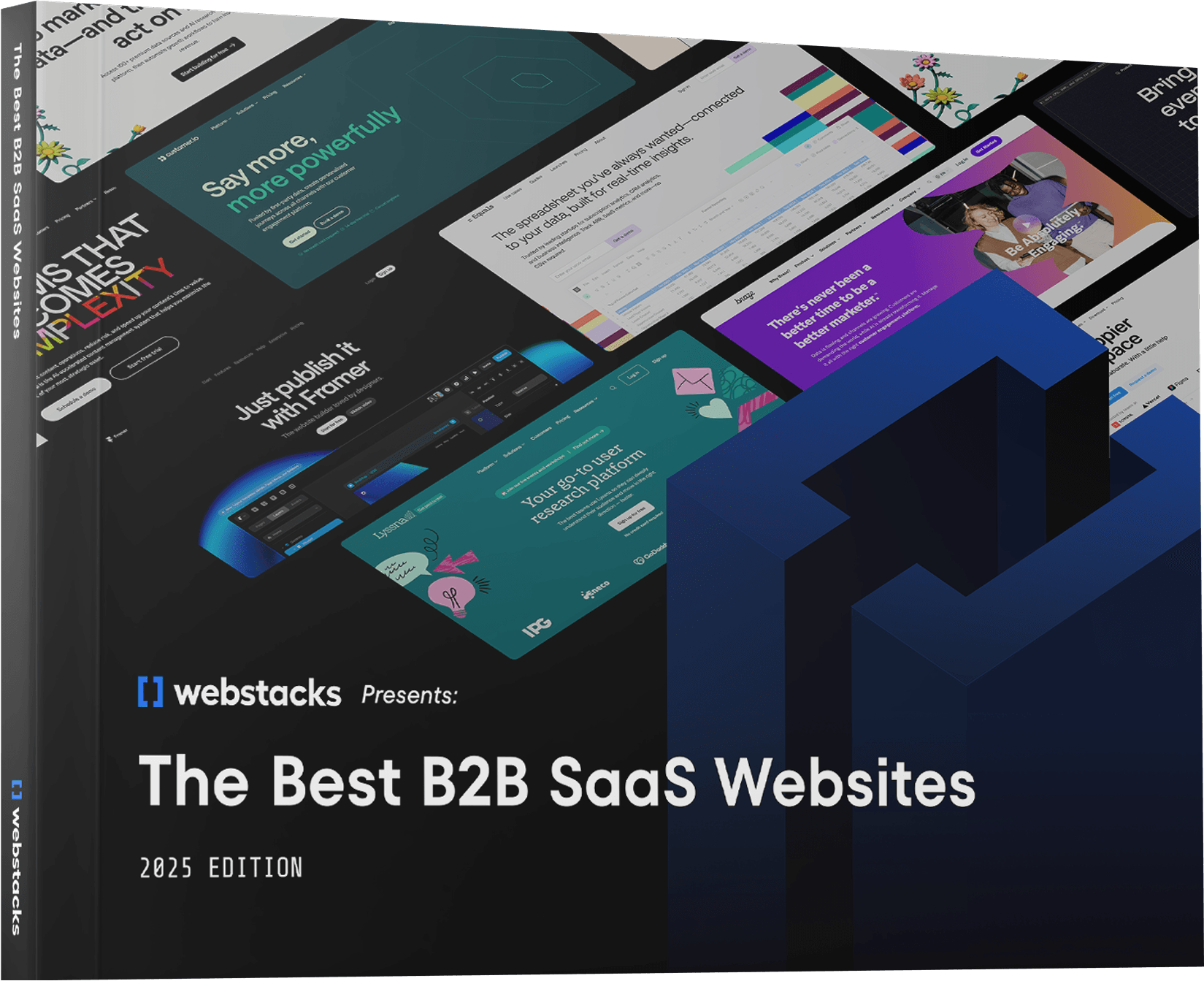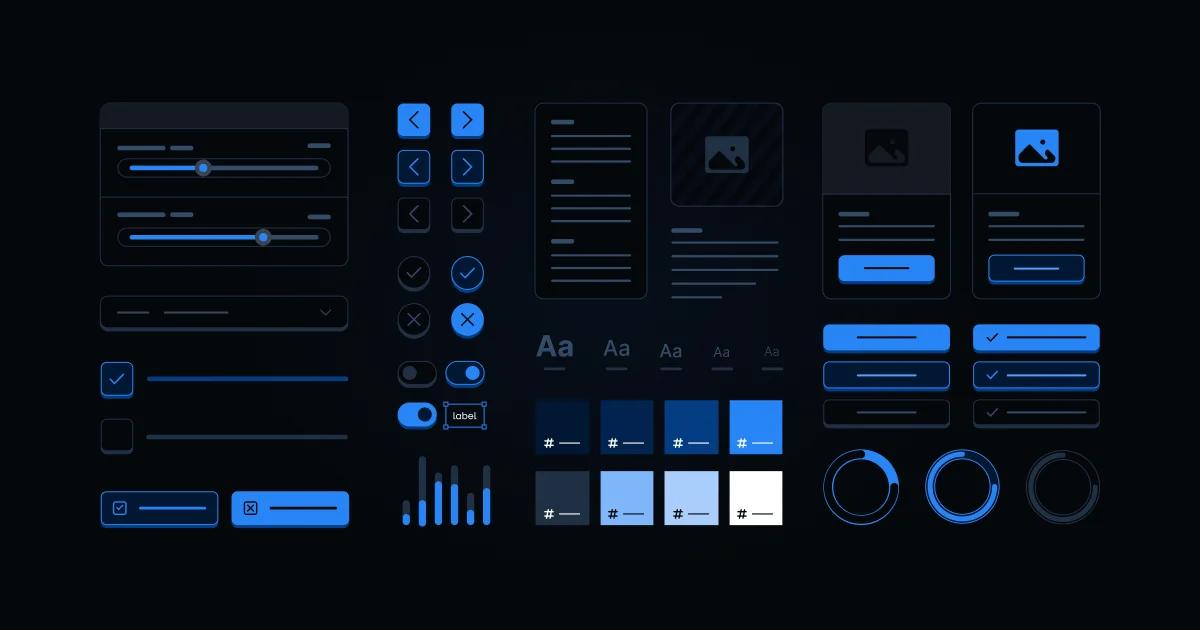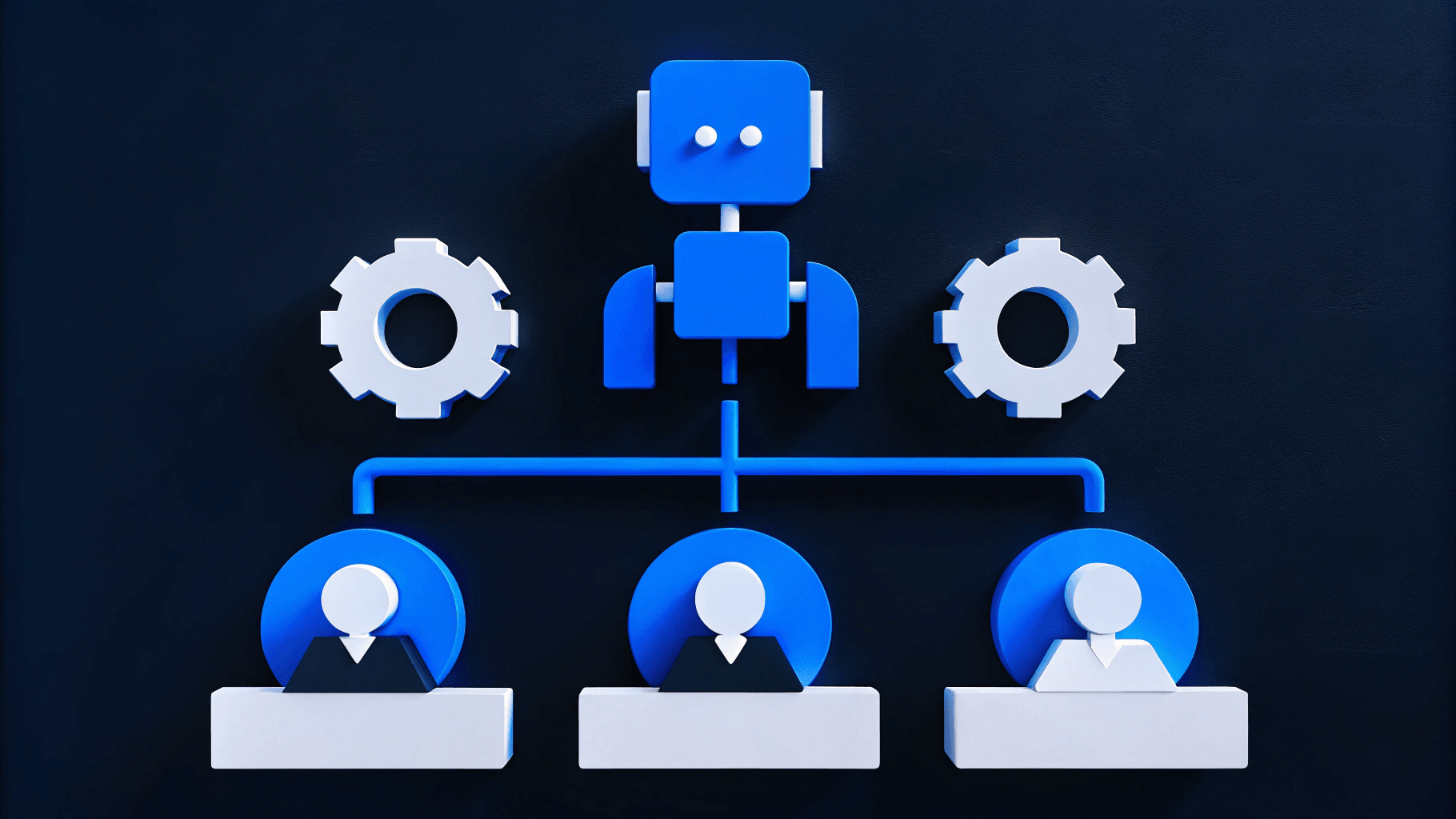As your enterprise grows, maintaining design consistency across your website, products, and marketing channels becomes increasingly complex. In fact, conflicting brand usage can lead to a 56% decrease in brand recognition. This is where implementing an enterprise design system can be a game-changer. It streamlines your design processes, enhances your brand identity, and opens up new levels of marketing versatility.
In brief:
- Enterprises face significant challenges in maintaining design consistency.
- An enterprise design system provides a centralized source for design assets.
- Implementing a design system increases efficiency, brand integrity, and marketing versatility.
- Building one involves assessing current needs, defining scope, and creating a roadmap.
What is an Enterprise Design System?
Enterprise design systems are used by 60% of businesses and are a comprehensive system of best practices, reusable design elements, processes, usage guidelines, and patterns that help businesses build consistent and efficient design and development processes.
It acts as a central source, providing a collection of design components, documentation, and guidelines that can be applied across an organization's digital products.
An enterprise design system offers the building blocks for designers, developers, and other team members to quickly create new solutions or transform existing ones, while ensuring alignment with the brand's visual identity and user experience (UX) principles.
Establishing a standardized system can streamline their design and development workflow, foster better collaboration, and deliver a cohesive experience for their customers.
At its core, an enterprise design system is a system of best practices that helps businesses build better products.
It provides a structured approach to design and development, ensuring that designers, developers, and other stakeholders work towards a common goal and speak the same visual language and illustration system.
By implementing an enterprise design system, organizations can open up a range of benefits, including increased efficiency, enhanced brand consistency, and improved collaboration between teams. It's a powerful tool that can help businesses of all sizes build better, more consistent digital experiences for their customers.

What Challenges Does an Enterprise Design System Solve?
As a design system agency, we know implementing an enterprise design system can be a game-changer for businesses, as it addresses several critical challenges that often plague organizations without a centralized design approach.
The primary challenges that an enterprise design system helps solve include:
Inconsistencies across the website, products, and other marketing channels
Without a unified design system, it's common for businesses to experience inconsistencies in the visual branding, user interface, and overall brand experience across their website, products, and other marketing channels.
This can lead to a fragmented and confusing customer experience, making it difficult to build a strong, recognizable brand identity. Conflicting brand usage can lead to a 56% decrease in brand recognition.
Lack of a central source of truth for assets
When design assets, such as logos, color palettes, and UI components, are scattered across various teams and platforms, it becomes challenging to maintain consistency and ensure that everyone is working with the latest approved versions.
An enterprise design system provides a central repository for all design assets, serving as the single source for the organization.
A limited number of designs that constrain your marketing efforts
Without a comprehensive design system, marketing teams often have access to a limited number of design templates and variations, which can significantly constrain their ability to create compelling and diverse marketing collateral.
An enterprise design system offers a strong library of reusable design components, allowing marketers to quickly and efficiently produce a wide range of marketing materials that align with the brand's visual identity.
Widening the knowledge gap between design, development, and marketing teams
When design, development, and marketing teams operate in silos, it can lead to a growing knowledge gap, where each team struggles to understand the challenges and constraints of the others.
An enterprise design system helps bridge this gap by providing a common language and framework for all teams to work together more effectively, streamlining the collaboration and communication processes.
By addressing these challenges, an enterprise design system empowers businesses to achieve greater consistency, efficiency, and collaboration across their organization, ultimately enhancing the overall customer experience and strengthening their brand identity.

Challenges and Solutions in Implementing a Design System
Implementing an enterprise design system comes with challenges, particularly in balancing consistency and flexibility.
Balancing Consistency and Flexibility
A design system provides the structure needed for consistency across enterprise websites, (and products) while remaining adaptable to unique user requirements and market dynamics. Striking this balance is crucial for fostering innovation without sacrificing cohesion. This analogy, highlighted by Smashing Magazine, underscores the need for both a solid foundation and the adaptability to innovate.
Solution: Create a flexible design system that accommodates customization while adhering to core brand guidelines. Encourage teams to innovate within the framework to meet specific project needs.
Keeping the Design System Up-to-Date
Keeping the design system current is crucial. Regular updates and effective governance are necessary to ensure its ongoing relevance and effectiveness. This requires a commitment to iteration based on user feedback and evolving business needs.
Solution: Establish a process for continuous improvement, allowing your design system to grow alongside your organization. Regular audits and updates help maintain its value in creating consistent and efficient digital products.
5 Key Components of an Enterprise Design System
Crafting an effective enterprise design system requires the integration of several pivotal elements. These components work in harmony to create a cohesive, scalable, and adaptable system that can be seamlessly adopted by designers, developers, and other team members.
1. Atomic Design Methodology
The atomic design methodology provides a structured approach to building user interfaces. It breaks down the design process into five distinct levels - atoms, molecules, organisms, templates, and pages - allowing for a modular and reusable design system.
embracing this methodology can ensure consistency and efficiency across your digital products.
2. Modular Web Design
Modular web design is a key component of an enterprise design system. Creating self-contained, reusable modules can quickly assemble and customize web pages and applications.
The modular approach enhances development speed and builds a cohesive user experience across your digital touchpoints.
3. Design System Documentation
Comprehensive design system documentation is a central repository for your organization's design assets, guidelines, and best practices.
This documentation should cover everything from color palettes and typography to UI components and interaction patterns. Maintaining strong design documentation can ensure that your design system remains consistent, scalable, and easily accessible to all stakeholders.
4. Branding and Visual Language
Establishing a strong and consistent branding and visual language is crucial for an enterprise design system as 55% of brand first impressions are visual. This includes defining your organization's color schemes, typography, iconography, and other visual elements.
By aligning your digital products with your brand identity, you can create a seamless and recognizable user experience that reinforces your brand's values and positioning.
5. Accessibility Standards
Prioritizing accessibility is a hallmark of a well-designed enterprise system. Incorporating accessibility standards and best practices can ensure that your digital products are inclusive and usable by individuals with diverse abilities.
This includes adherence to WCAG guidelines, ensuring keyboard accessibility, and optimizing for screen readers and other assistive technologies.
These key components - the atomic design methodology, modular web design, design system documentation, branding and visual language, and accessibility standards - work in tandem to create a comprehensive enterprise design system.
By embracing these elements, you can create consistency, efficiency, and inclusivity across your digital ecosystem, driving enhanced user experiences and strengthening your brand's identity.
5 Benefits of an Enterprise Design System
Implementing an enterprise design system can provide your business with numerous advantages.
1. Increased Velocity and Speed to Market
Standardizing design elements and workflows enables your teams to build new solutions or transform existing ones more quickly. This accelerated pace allows you to respond to market demands and seize opportunities with agility, giving you a competitive edge.
2. Increased Efficiency
The centralized repository of design assets provided by an enterprise design system eliminates the time and resources spent searching for or recreating design elements.
This promotes greater efficiency, allowing your teams to focus on high-impact tasks and deliver more value to your customers.
3. Enhanced Brand Identity
An enterprise design system ensures a consistent visual language and user experience across all your digital touchpoints. 68% of businesses also said that brand consistency was a major contributor to revenue growth.
This cohesive branding strengthens your company's identity, reinforcing your message and building trust with your audience.
4. Increased Versatility for Marketing Teams
The flexible and scalable nature of an enterprise design system empowers your marketing teams to adapt design components easily to various campaigns and initiatives. This versatility enables them to create impactful and on-brand content, enhancing your brand's reach and effectiveness.
5. Improved Team Collaboration
By establishing a common language and standards, a design system enhances communication between designers, developers, and stakeholders. This shared framework ensures alignment and allows teams to focus on solving complex challenges rather than reinventing basic design elements.
Measuring the Success of an Enterprise Design System
When assessing the success of an enterprise design system, focus on specific metrics that demonstrate its impact.
Design and Development Time Savings
Track how reusable components reduce design and development time, accelerating project timelines and enabling faster delivery of digital products. Efficiency is boosted by providing pre-built, reusable components.
Reduction in Bugs and Issues
Monitor the decrease in design-related bugs. A well-structured design system ensures consistency, minimizing errors and discrepancies across platforms, leading to more stable and reliable user experiences, as outlined by Netguru.
By focusing on these metrics, you can effectively gauge the success of your enterprise design system in enhancing productivity and maintaining quality across digital products.
Building Your Enterprise Design System Roadmap
Implementing an enterprise design system is a strategic initiative that requires a well-planned roadmap. The process begins with assessing the current state of your design and development workflows, as well as identifying the specific needs and pain points of your organization.
Assessing Current State and Needs
Start by evaluating your existing design and website assets. Identify areas where inconsistencies or lack of a central source have created challenges for your teams. Assess the versatility of your current design offerings and how they align with your marketing initiatives.
Understand the knowledge gaps between your design, development, and marketing teams to uncover opportunities for better collaboration.
Identifying Website Initiatives
Next, outline the key website projects and initiatives the enterprise design system will support. Consider upcoming website refreshes or redesigns, new product launches, and rebranding efforts that could benefit from a cohesive design framework.
Mapping out these initiatives will help you define the scope and prioritize the features of your design system.
Defining Scope and Prioritizing Features
With a clear understanding of your current state and future website needs, you can start defining the scope of your enterprise design system.
Identify the core components, such as the atomic design methodology, modular web design, and brand guidelines, that will form the foundation of your system.
Prioritize the features that will have the greatest impact on your design, development, and marketing workflows.
Creating a Timeline and Milestones
Only 40% of workplace projects are completed on time, so, develop a detailed timeline and set of milestones to guide the implementation of your enterprise design system to increase your chances of meeting your deadline. This roadmap will ensure a smooth and successful rollout, with clear goals and checkpoints along the way.
Breaking down the process into manageable steps can effectively build and scale your design system to meet the evolving needs of your organization.

Maintaining and Scaling the Design System
Maintaining an enterprise design system is an ongoing process that requires diligent attention. Organizing your design files in a logical and consistent manner is crucial for ensuring the system remains accessible and user-friendly.
Documentation, such as the kind provided by tools like Storybook which is used by over 8 thousand websites, plays a vital role in communicating the system's components, guidelines, and best practices to your team members.
Organizing Your Design Files
A well-structured file organization system is the foundation for a sustainable design system. Consider implementing a naming convention that aligns with your design system's hierarchy and components.
This will make it easier for designers and developers to locate and reference the necessary assets. Additionally, consider using version control software like Git to track changes and collaborate efficiently.
Documentation with Storybook
Documentation is essential for maintaining and scaling your design system. Storybook, a popular tool for building UI components in isolation, can be a valuable resource for documenting your design system.
Use Storybook to create a centralized hub that showcases your system's components, all variations, and associated guidelines. This will ensure that your team has a solid understanding of the design system and can effectively implement it across your digital products.
Building a Solid Foundation
Constructing a strong foundation for your design system is crucial for its long-term success. Establish well-defined principles, patterns, and components that will serve as the building blocks for your digital products.
This solid foundation will enable your design system to grow and evolve, adapting to the changing needs of your organization and its users.
Our Take on Implementing an Enterprise Design System
At Webstacks, we've witnessed how a well-crafted enterprise design system can transform businesses. As web design experts, we believe that an effective design system is not just a collection of components but a strategic asset that drives innovation and efficiency.
Why We Advocate for Design Systems
- Enhanced Collaboration: A unified framework fosters better communication between teams, accelerating project timelines.
- Scalability: A scalable design system allows you to adapt quickly to new platforms and technologies, ensuring your digital presence remains robust.
- Exceptional User Experiences: Consistency in design translates to a seamless user experience, building trust and engagement with your audience.

Conclusion
Implementing an enterprise design system can be a transformative initiative for your business, but it requires a well-planned and executed strategy.
Understanding the key components of a design system, the challenges it can address, and the benefits it can provide help to develop a roadmap for building and maintaining a strong and scalable enterprise design system.
This system will not only streamline your design and development workflows, but also enhance your brand identity, increase efficiency, and empower your marketing teams.
Here at Webstacks, we help many leaders in tech level up their online presence through next-gen solutions for B2B websites. Join our growing community of B2B experts and learn the ins and outs of B2B SaaS websites through our eBook.
If you want to learn more about B2B websites feel free to reach out to us today!




